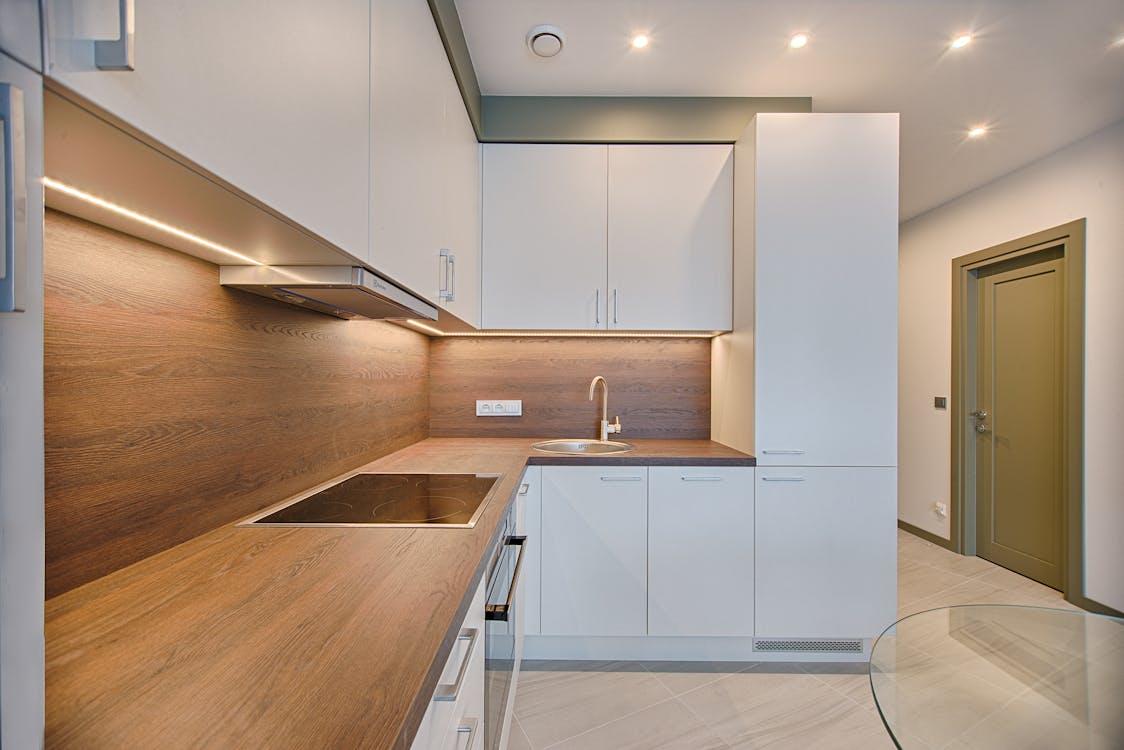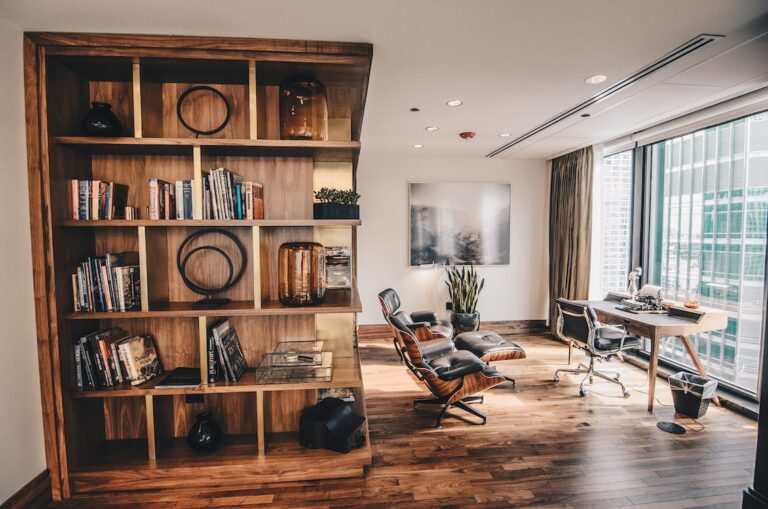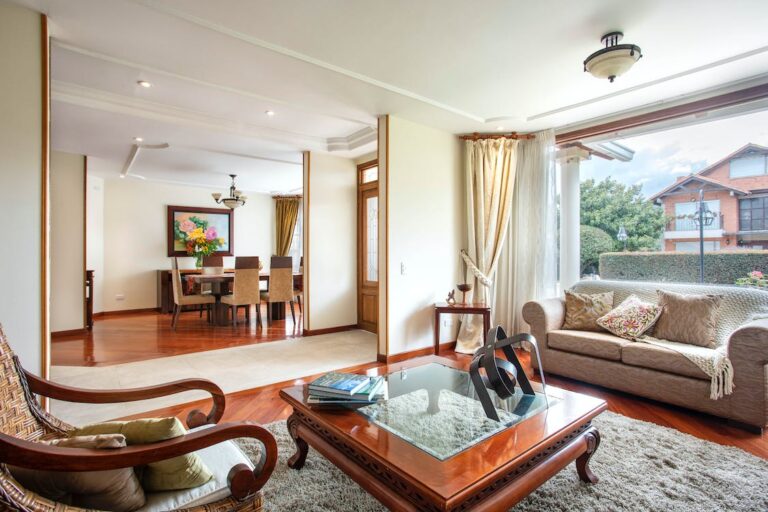Mastering the Art of Interior Design : Tips for Homeowners in 2024
If you’re a homeowner looking to master the art of interior design, you’ve come to the right place! Creating a beautiful and functional space can be both exciting and daunting. In this article “Mastering the Art of Interior Design : Tips for Homeowners in 2024”, we will provide you with valuable tips and insights that will help you navigate the world of interior design like a pro. Whether you’re starting from scratch or looking to refresh your existing space, these tips will help you transform your home into a place that reflects your personal style and meets your needs.
Table of Contents
Mastering the Art of Interior Design

Interior design is not just about aesthetics; it’s about creating a space that enhances your well-being and brings joy to your everyday life. It’s about finding the perfect balance between form and function, and curating an environment that both inspires and nurtures you. With the right guidance and a little bit of creativity, you can achieve the home of your dreams.
From understanding the market trends to mastering design techniques, we’ll cover it all. So, let’s dive in and explore the fascinating world of interior design together. Get ready to unleash your inner designer and turn your home into a haven of style and comfort.
Growth and Statistics of Interior Design Market

Interior design is a thriving industry that has experienced significant growth in recent years. Whether you’re considering a career in interior design or looking to hire a professional for your home, understanding the market’s growth and statistics can provide valuable insights. Let’s take a closer look at the growth projections, market outlook, gender dynamics, and economic value of the interior design industry.
Job Growth Projections
The future looks bright for interior designers. According to the Bureau of Labor Statistics, interior design jobs are expected to increase by 13% in the next decade. As more people recognize the importance of creating aesthetically pleasing and functional spaces, the demand for skilled interior designers is on the rise.
Market Growth Outlook
The interior design market is also projected to experience steady growth. It is estimated that the market will grow at a Compound Annual Growth Rate (CAGR) of 3.3% until 2028. This growth can be attributed to various factors, including the increasing desire for personalized and well-designed living spaces.
Gender Dynamics
Interior design has historically been a female-dominated field, and that trend continues today. According to a survey conducted by the American Society of Interior Designers, 72.7% of all interior designers are women, while 22.4% are men. However, the industry is becoming more diverse, with an increasing number of male designers entering the profession.
Economic Value of the Market
The economic value of the interior design market is significant. In 2020, the global interior design market was valued at $130.85 billion. It is expected to grow to USD 168.49 billion by 2028, at a CAGR of 5.13%. This growth is driven by factors such as urbanization, increasing disposable income, and the growing emphasis on creating beautiful and functional spaces.
Number of Interior Designers in the US
If you’re in the United States, you’ll be glad to know that there is a wide pool of interior designers to choose from. As of now, the number of interior designers employed in the US exceeds 119,778. This means that you have a variety of professionals to choose from, each with their unique style and expertise.
The growth and statistics of the interior design market clearly demonstrate the increasing importance and demand for skilled professionals in the industry. Whether you’re interested in pursuing a career in interior design or seeking inspiration for your home, understanding these trends can help you make informed decisions and create spaces that are both beautiful and functional.
Trends and Approaches in Interior Design

Interior design is an ever-evolving field, with new trends and approaches constantly emerging. Whether you’re looking to update your living room, revamp your bedroom, or create a stylish home office, staying informed about the latest trends can help you achieve a modern and visually appealing design. Here are some of the top trends and approaches in interior design to inspire your next project:
Y2K Aesthetic
The Y2K aesthetic, inspired by the turn of the millennium, has made a strong comeback in recent years. This trend embraces bold colors, futuristic elements, and a playful mix of textures and patterns. Think metallic finishes, neon lights, and a touch of nostalgia. Incorporating Y2K elements into your design can add a fun and vibrant atmosphere to your space.
Holistic Health and Downtime Considerations
In today’s fast-paced world, creating a home that supports mental and physical well-being is a top priority. Homeowners are increasingly seeking spaces that promote relaxation, self-care, and mindfulness. Integrating natural materials, comfortable furniture, and calming color palettes can help create a tranquil environment that encourages downtime and supports overall well-being.
Japandi Style
A fusion of Japanese and Scandinavian design, Japandi style has gained immense popularity in recent years. This minimalist approach combines the warmth and simplicity of Scandinavian design with the elegance and zen aesthetic of Japanese design. Clean lines, natural materials, and a neutral color palette are key elements of Japandi style. By incorporating this trend, you can achieve a harmonious and serene atmosphere in your home.
Maximalism
While minimalism has long dominated the interior design scene, maximalism is making a strong comeback. Maximalist design embraces bold colors, intricate patterns, and eclectic elements. It’s all about creating a visually stimulating and expressive space. Don’t be afraid to mix and match different styles, textures, and colors to create a unique and vibrant interior.
Mixing Vintage and New Furnishings
Creating a well-balanced and unique design often involves combining vintage pieces with contemporary ones. Mixing old and new furnishings adds character and tells a story in your space. Don’t shy away from incorporating antique furniture or vintage accessories alongside modern pieces to create a curated and eclectic look.
Handmade Finishes and Plant-Inspired Colors
Bringing elements of nature into your home is a timeless trend that continues to dominate the interior design scene. Handmade finishes, such as handcrafted ceramics or woven textiles, add a touch of artistry and uniqueness to your space. Plant-inspired colors, such as earthy greens and calming blues, can create a soothing and refreshing ambiance.
Mixing Patterns and Textures
Creating visual interest in your space is all about playing with patterns and textures. Incorporating a variety of textures, such as velvet, faux fur, or rattan, can add depth and dimension to your design. Mixing different patterns, such as geometric prints or floral motifs, can create a visually captivating and dynamic space.
Lighting Considerations
Lighting is a crucial aspect of interior design that often goes overlooked. The right lighting can completely transform the mood and ambiance of a room. Consider incorporating a mix of ambient, task, and accent lighting to create a well-lit and inviting space. Don’t forget to experiment with different light fixtures to add a touch of style and personality to your design.
Emphasis on Natural Materials and Comfort
Incorporating natural materials, such as wood, stone, or jute, can add warmth and a sense of authenticity to your space. From wooden furniture to stone countertops, integrating natural elements creates a timeless and inviting atmosphere. Additionally, comfort is a key consideration in modern interior design. Invest in comfortable seating, cozy textiles, and plush rugs to create a welcoming and relaxing environment.
Creating Multifunctional Spaces
With the increasing trend of remote work and flexible lifestyles, creating multifunctional spaces has become essential. Designing rooms that can serve multiple purposes, such as a home office/guest bedroom or a dining room/entertainment area, can maximize the functionality of your home. Consider incorporating smart storage solutions and flexible furniture to optimize your space.
Prioritizing Statement Pieces
Incorporating statement pieces, such as bold artwork or unique furniture, can instantly elevate the style and personality of your space. These eye-catching elements serve as focal points and create visual interest in the room. Don’t be afraid to mix different styles or experiment with bold colors to create a space that reflects your personal taste and makes a lasting impression.
Influence of Color Choices and Accent Pieces
Color choices and accent pieces play a significant role in interior design. The colors you choose can set the mood and atmosphere of your space. Consider using warm and earthy tones to create a cozy and inviting environment, or opt for vibrant and energetic colors to add a pop of personality. Additionally, carefully selecting accent pieces, such as statement rugs or decorative accessories, can add personality and visual interest to your design.
Using Large Plants and Diverse Lighting
Bringing the outdoors in is a trend that continues to thrive. Large indoor plants not only add a touch of nature to your space but also improve air quality and create a calming atmosphere. Pairing these plants with diverse lighting options, such as floor lamps or pendant lights, can create a dramatic and visually appealing effect.
Asymmetry and Working with Existing Pieces
When it comes to interior design, embracing asymmetry can add a sense of creativity and dynamism to your space. Don’t feel compelled to achieve perfect symmetry; instead, play with different furniture arrangements and mix different sizes and shapes. Additionally, working with existing pieces and incorporating them into your design can add a personal touch and create a unique space that tells your story.
Adding Architectural Details
Architectural details, such as molding, wainscoting, or ceiling beams, can add a touch of elegance and sophistication to your space. These details create visual interest and add depth to otherwise plain walls or ceilings. Consider incorporating architectural elements that complement your design style and enhance the overall aesthetic of your space.
By staying informed about the latest trends and approaches in interior design, you can create a home that not only reflects your personal style but also stands the test of time. Incorporate these ideas into your next design project and watch as your space transforms into a stylish and visually captivating oasis.
Also Read: Designing a Functional and Stylish Home Office : Ideas for Homeowners in 2023.
Interior Design Tips for Homeowners

Whether you’re moving into a new home or looking to refresh your current space, interior design plays a crucial role in creating a beautiful and functional environment. But where do you start? How do you ensure that your design choices reflect your personal style while also considering practicality? In this article, we will provide you with some valuable tips and insights to help you master the art of interior design and create a space that you will love coming home to.
Working with Proportions and Scale
One of the key aspects of interior design is understanding the importance of proportions and scale. Furniture placement is not just about fitting everything into a room; it’s about creating a visually balanced and harmonious space. Here are some tips to consider:
- Measure Twice: Before purchasing furniture, make sure to measure your space accurately. This will help you determine the appropriate size and scale for your furniture pieces.
- Create Visual Balance: Play with different combinations of furniture sizes to create a sense of balance in the room. For example, pair a larger sofa with smaller chairs, or vice versa.
- Consider Traffic Flow: Leave enough space for easy movement within the room. Avoid placing furniture in a way that obstructs natural pathways or makes the room feel cramped.
Creating a Mood Board
A mood board is a visual representation of your design ideas. It helps you gather inspiration, explore different color schemes, textures, and materials, and ultimately bring your vision to life. Here are some steps to create an effective mood board:
- Collect Inspiration: Browse magazines, websites, and social media platforms for images that resonate with your aesthetic preferences. Don’t be afraid to think outside the box and gather a variety of images.
- Organize and Arrange: Once you have a collection of images, arrange them on a physical or digital board to see how different elements work together. Look for common themes and color palettes that you are drawn to.
- Refine and Select: As you narrow down your choices, start refining your selections based on the overall look and feel you want to achieve. This will help you make informed decisions when selecting furniture, materials, and accessories.
Starting with a Neutral Base
If you’re unsure about which color palette to choose or you want a versatile and timeless look, starting with a neutral base is a great option. Neutrals create a calm and cohesive backdrop for your furnishings and allow you to experiment with pops of color and textures. Here’s how you can start with a neutral base:
- Choose a Neutral Wall Color: Opt for neutral shades such as whites, creams, and grays for your walls. These colors provide a blank canvas and make it easier to change or update the look of your space.
- Incorporate Natural Materials: Incorporate natural materials such as wood, stone, and rattan to create warmth and texture in your space.
- Layer with Textiles and Accessories: Add depth and visual interest to your neutral base by layering with different textures and patterns through textiles, rugs, and accessories. This allows you to easily switch up the look without making major changes.
Refurbishing Old Furniture
Revamping old furniture is not only a budget-friendly option but also an opportunity to add character and uniqueness to your space. Here are some ideas to consider:
- Fresh Coat of Paint: Give old wooden furniture a new lease of life by sanding and repainting it with a fresh coat of paint in a color that complements your overall design scheme.
- Reupholstering: Consider reupholstering worn-out chairs or sofas with a new fabric that suits your style. This is a great way to customize furniture pieces and add a personal touch to your space.
- Mixed Material Accents: Mix and match different materials, such as using reclaimed wood for a tabletop or incorporating vintage knobs and handles on cabinets, to create a unique and eclectic look.
Communication and Honesty with Designers
If you’re working with interior designers, communication and honesty are key to achieving your desired outcome. Here’s how you can effectively collaborate with designers:
- Share Your Vision: Be clear about your expectations and preferences from the start. Provide your designer with inspiration images, color palettes, and any specific furniture or accessories you have in mind.
- Give Feedback: Regularly communicate with your designer throughout the process. Provide feedback on the design proposals and be open to suggestions and alternatives.
- Be Budget-Conscious: Discuss your budget with the designer and establish priorities. This will help them make informed decisions and suggest options that align with your financial constraints.
Playing with Temperatures
Temperature refers to the warmth or coolness of a color. By understanding the impact of color temperature, you can create the desired atmosphere in your space. Consider the following tips:
- Warm Colors: Warm colors like red, orange, and yellow create a cozy and inviting ambiance. They are great for spaces where you want to promote social interaction, such as living rooms and dining areas.
- Cool Colors: Cool colors like blues, greens, and purples have a calming effect and are ideal for bedrooms and home offices. They create a serene and peaceful environment.
- Balance and Contrast: Experiment with a combination of warm and cool colors to create visual interest and balance in your space. For example, pair cool-toned furniture with warm-colored walls or vice versa.
Creating Zones, Not Just Rooms
In today’s modern homes, creating distinct zones within a room is becoming increasingly popular. This approach allows you to maximize the functionality of the space and cater to different activities or needs. Here are some ideas to consider:
- Open Shelving: Use open shelving to separate areas without creating visual barriers. For example, you can create a zone for a home office by incorporating a desk and shelving unit, while still maintaining an open and spacious feel.
- Rugs and Furniture Placement: Define different zones by using rugs to anchor furniture groupings. For example, a large rug can delineate the seating area in a living room, while a smaller rug can define a cozy reading nook.
- Lighting: Use lighting to emphasize different zones within a room. For example, pendant lights can be used to highlight a dining area, while task lighting can be added to a workspace.
With these interior design tips for homeowners, you are now equipped with valuable insights to create a space that is beautiful, functional, and reflective of your personal style. Remember, the most important aspect of interior design is to have fun and enjoy the process. Happy decorating!
Also Read: Maximizing Your Home’s Natural Light : Architectural Tips and Tricks in 2023.
Conclusion
Whether you’re a homeowner looking to refresh your space or someone with a passion for interior design, mastering the art of interior design is a valuable skill to have. By following these tips and staying up to date with the latest trends, you can create a beautiful and functional home that truly reflects your style and personality.
Remember, attention to detail, creativity, and a focus on comfort are key when it comes to interior design. Take the time to plan and visualize your ideas, communicate openly with designers if needed, and don’t be afraid to experiment and think outside the box. With the right approach, you can transform any space into a stunning sanctuary that you’ll love coming home to.
For more information and design ideas, read Incorporating Natural Elements in Minimalist Home Decor in 2024. Happy Designing!!
At Arkitecture Today, we strive to provide you with daily dose of architecture, home and interior design, decoration ideas and inspiration, kitchen and bathroom design. Visit us at arkitecture.today to explore more design tips, trends, and ideas.
So, go ahead and let your creativity shine and enjoy the journey of designing your dream space!
Frequently Asked Questions
- What are some essential tips for mastering the art of interior design?
Some essential tips for mastering the art of interior design include: 1. Understanding the principles of design, 2. Planning and creating a cohesive color scheme, 3. Utilizing proper lighting techniques, 4. Incorporating textures and patterns, and 5. Balancing functionality with aesthetics. - How can I create a cohesive color scheme for my home’s interior design?
To create a cohesive color scheme, consider using a color wheel, selecting a dominant color, and then choosing complementary or analogous colors to create a balanced and harmonious look. Test different color combinations and consider the mood and atmosphere you want to create in each space. - What are some lighting techniques to enhance interior design?
To enhance interior design with lighting, consider using a combination of ambient, task, and accent lighting. Use different light fixtures strategically to highlight architectural features, create focal points, and provide functional illumination. Dimmers and layered lighting can also add depth and versatility to a room. - How can I incorporate textures and patterns in my interior design?
Incorporate textures and patterns through various elements like rugs, pillows, curtains, and furniture fabrics. Mix different textures and patterns, but ensure they complement each other. Keep the overall color scheme and style of the room in mind to maintain cohesiveness. - How do I balance functionality with aesthetics in interior design?
To balance functionality with aesthetics, prioritize your needs and lifestyle while selecting furniture, accessories, and storage solutions. Opt for multi-functional pieces, declutter regularly, and ensure that each item serves a purpose. Incorporate design elements that align with your personal style to create a visually pleasing and functional space.







